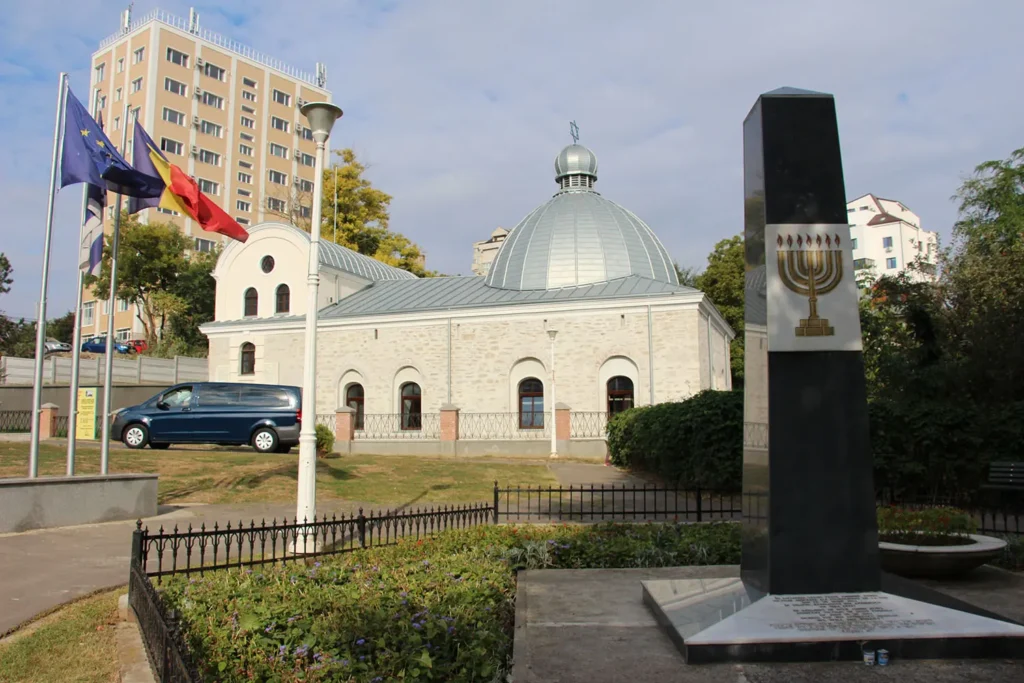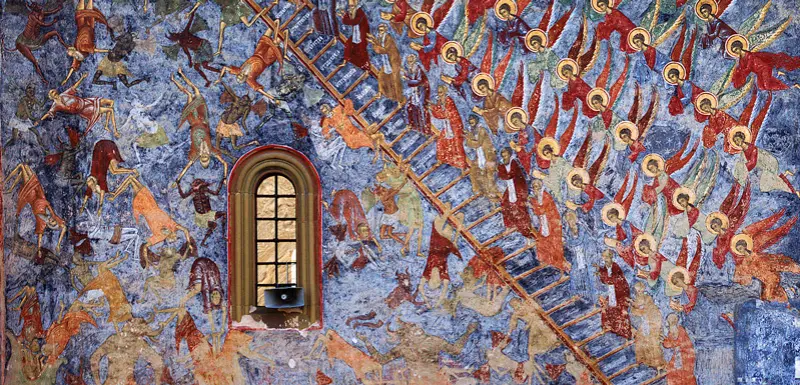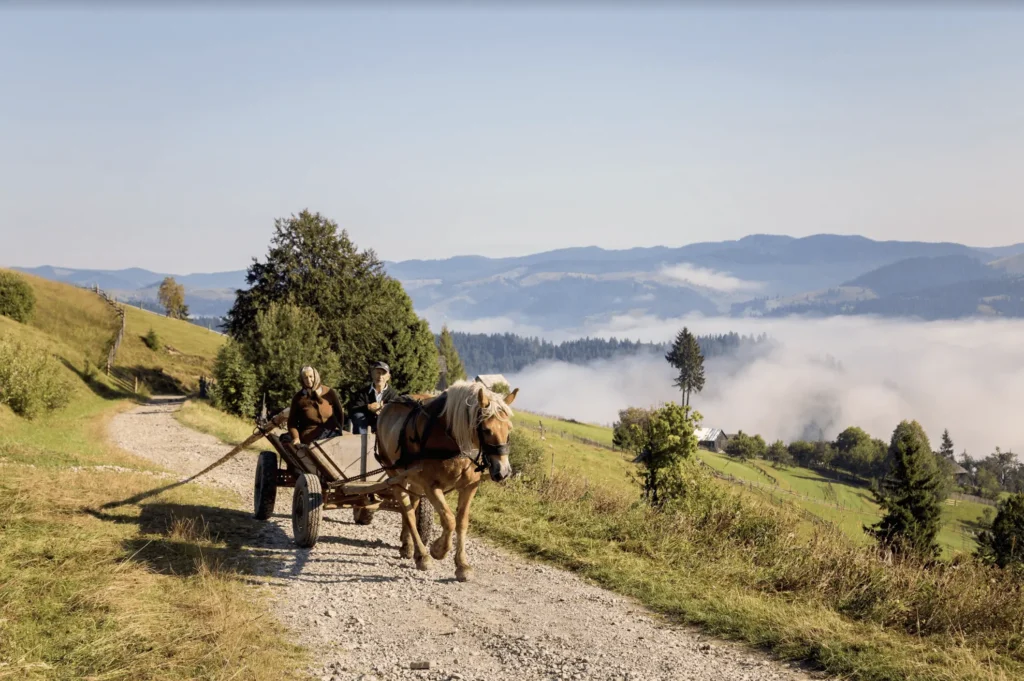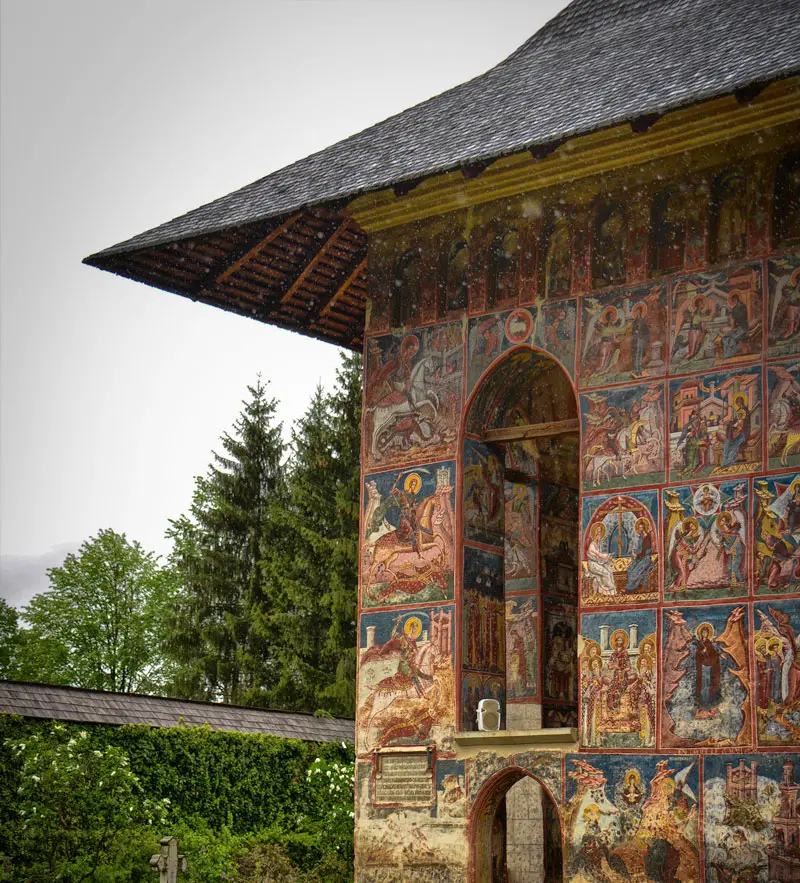Chapters
In the northern part of Romania, just as you enter the land Bucovina, you will find some unique pieces of architecture that you can’t find anywhere else in the world. The Painted Monasteries of Bucovina were built between 1487 and 1583 and are decorated by skillful masters with biblical stories.
During the Anti-Ottoman wars, Moldavia was at peace until somewhere around 1420, when Mehmed I raided it, and the land was in anarchy during the 1440s and 1450s. In 1457, Stephen the Great came to power as King of Moldavia until his death in 1504. He fought 36 battles against the Ottoman Empire and came out as a victor in 34 of them. As a sign of gratitude, he built churches and monasteries after many of his victories, many of which stand to this day. After his son, Petru Rares, came to power in 1527, he promoted a new vision for the churches of Bucovina. Thus, he brought skilled artists to paint the monasteries that were built over the years with elaborate frescoes.
8 of the churches have stood the test of time; they are the best preserved painted churches and have been included in the UNESCO World Heritage in 1993 as the Painted Churches of Moldavia or commonly known as the Painted Monasteries of Bucovina.
Some of these monasteries bear the last traces of the Byzantine culture in Europe.
Arbore Church
The Arbore Church was built in 1502 by Luca Arbore, one of Stephen the Great’s advisors, as an homage to the Beheading of St. John the Baptist. The murals were painted 40 years later, by Dragos Coman with the scene of Genesis depicting the death of St. John the Baptist.
Humor Monastery
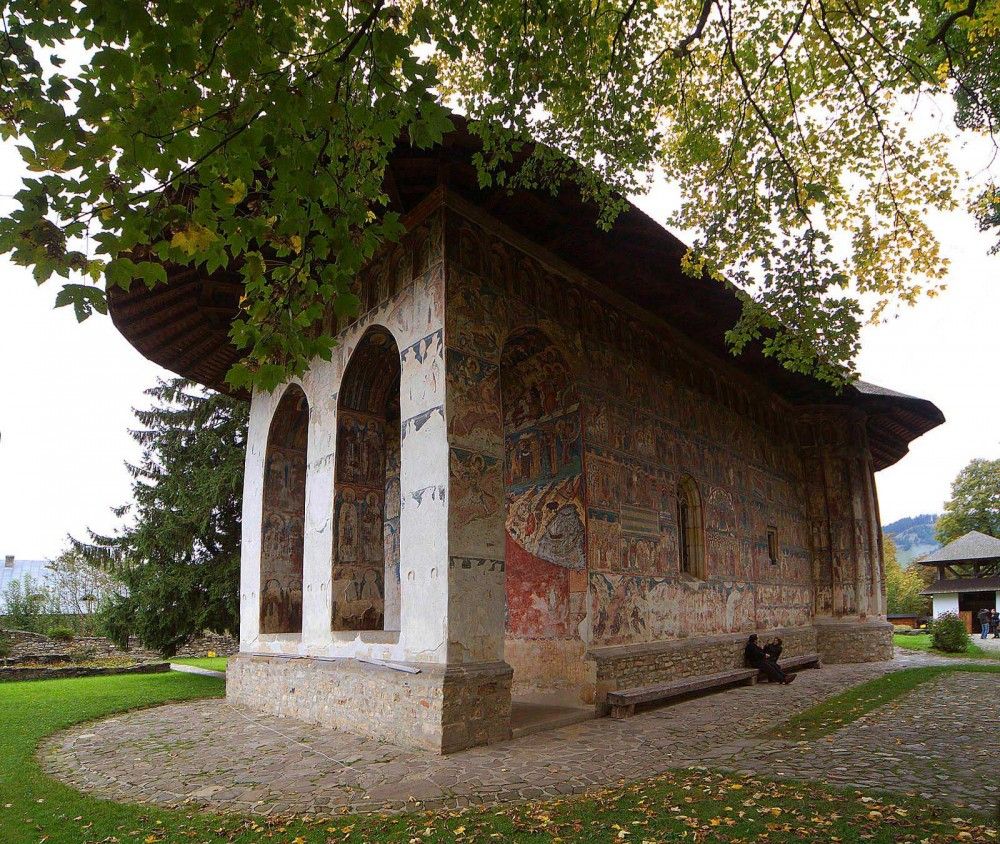
In the area with the highest density of UNESCO-listed monuments in Romania, surrounded by thick stone walls, stands the Humor Monastery. A small, cross-shaped church was built here in 1530 by Petru Rares, a Voivode of Moldavia, and it was dedicated to the Dormition of Virgin. Red hues dominate the exterior frescoes showing scenes from the lives of saints, as well as significant moments from the locals’ lives, such as the wars with the Turks. In the tidy and flower-filled courtyard, silence reigns; the nuns here seem to live a life that is completely separated from the agitation outside of the walls, a life that is the same as that of their spiritual sisters from centuries ago. In a place where time stands still, where the passing of days and nights are measured in prayers, a new world opens to the soul of the visitor: the mundane and the daily bustle disappear, leaving room for meditation.
Today, you can admire and even purchase beautiful handmade objects from the locals, such as icons carved in wood, colourful woollen carpets, or regional costumes.
Moldovita Monastery
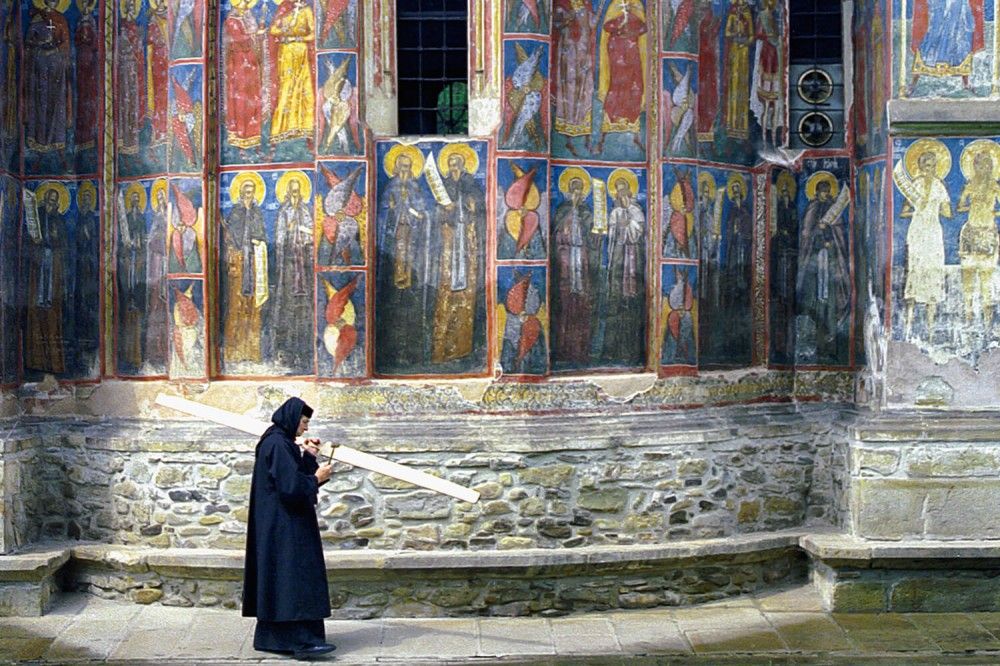
The Moldovita Monastery was built by Petru Rares, Stephen the Great’s illegitimate son, in 1532, as a protective barrier against the Muslim Ottoman invaders.
The frescoes were painted by Toma of Suceava in 1537, and they contain strong nuances of gold and blue. The last judgment covers the entire surface of the western walls, and it includes several other scenes such as the Siege of Constantinople or the Tree of Jesse.
Patrauti Church
Built in 1487, the Patrauti Church is the oldest of the 8 painted churches of Moldavia. It was founded by Stephen the Great and its frescoes can be dated back to 1550.
The church was transformed into a parish church in 1775 after Bukovina was annexed to the Habsburg Empire.
Probota Monastery
The original ensemble was founded by Petru Rares in 1530, but today only the church and the residence of the prince. The monastery is surrounded by tall walls with corner towers and a gate tower that was built in 1550 for defense.
The monastery underwent several restoration and conservation campaigns to fix the floors and repaint it.
St. John the New Monastery
The Saint John the New Monastery was built between 1514 and 1522. The construction was started by Bogdan III the One-Eyed and completed by Stephen IV. It served as the metropolitan cathedral of Moldavia until 1677, and since 1991 it serves as the cathedral of the Archdiocese of Suceava and Radauti.
The church is dedicated to St. John the New of Suceava, a Moldavian monk who preached during Turkish occupation and was martyred for his deeds.
Sucevita Monastery
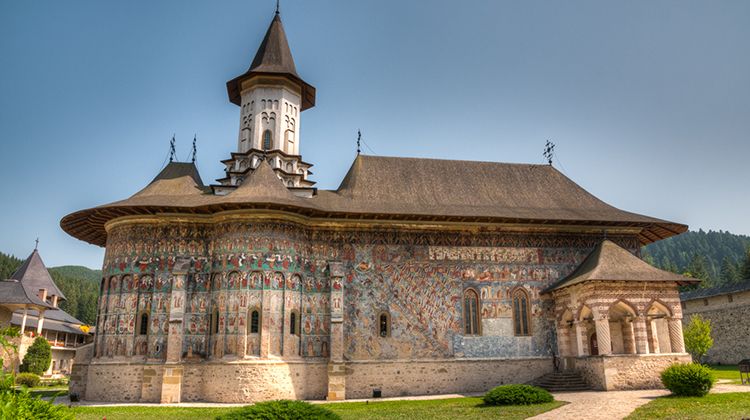
Sucevita Monastery
Built in 1585, the architecture of the church combines both Byzantine and Gothic elements. Both the inside and the outside are covered with murals which depict biblical episodes from both the Old and the New Testament. It was one of the latest painted monasteries, and its frescoes can be traced back to 1601.
The monastery served both as a residence as well as a fortified monastery. Today, its solid walls are home to a museum full of historical and art objects.
Voronet Monastery

The Voronet Monastery is perhaps the most famous of the 8 painted monasteries. It was constructed by Stephen the Great in 1488 over a period of 3 months and 3 weeks, after his victory at the Battle of Vaslui. Often known as the “Sistine Chapel of the East”, its frescoes feature a unique shade of blue which no artist knows how to replicate, known in Romania as “Voronet Blue”.
A legend says that during the fight, as he was about to lose, Stephen the Great came to Daniel the Hermit, a renowned spiritual guide, to ask for advice. He told Stephen not to surrender. After his victory, Stephen built the Voronet Monastery and dedicated it to Saint George. The original entrance bears an inscription of Stephen:
I, Voivode Stephen, by the Grace of God Ruler of Moldavia, son of Bogdan, have started to have the monastery of Voroneț built to the glory of the holy and well-known St George, the great and victorious martyr, in 6996 in May on 26, on one day of Monday, after the Pentecost and I had it finished the same year, in September 1488.
Now that you know more about them, why don’t you see them live on a short trip to the Painted Monasteries of Bukovina?


